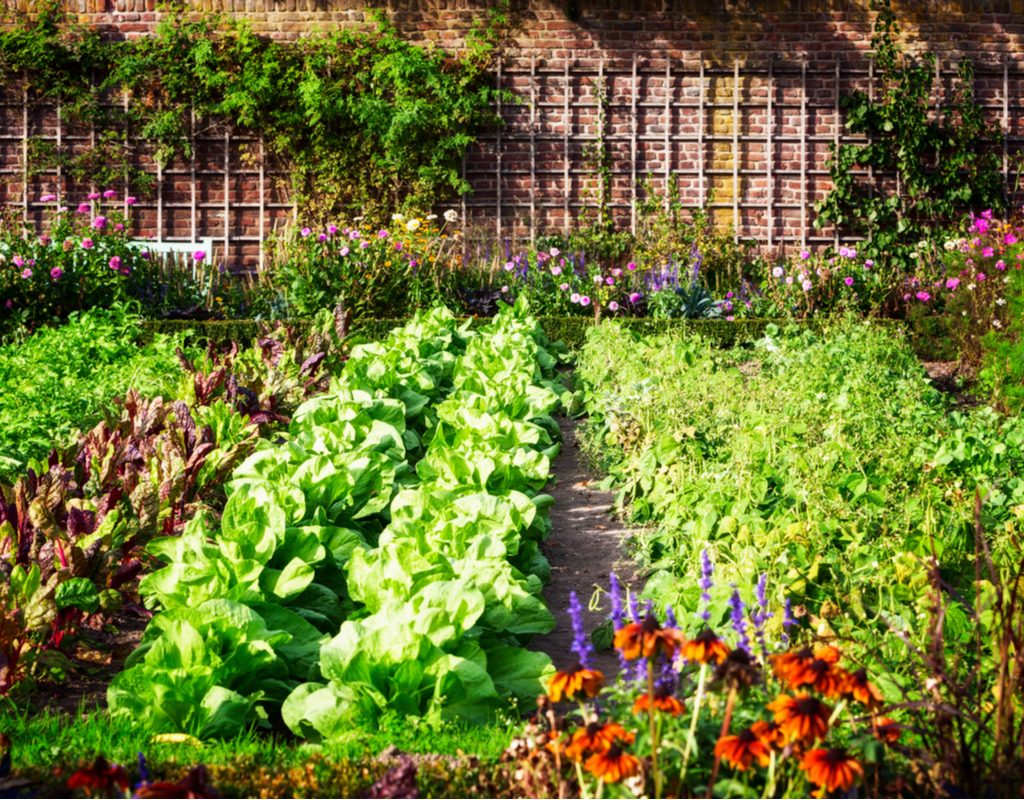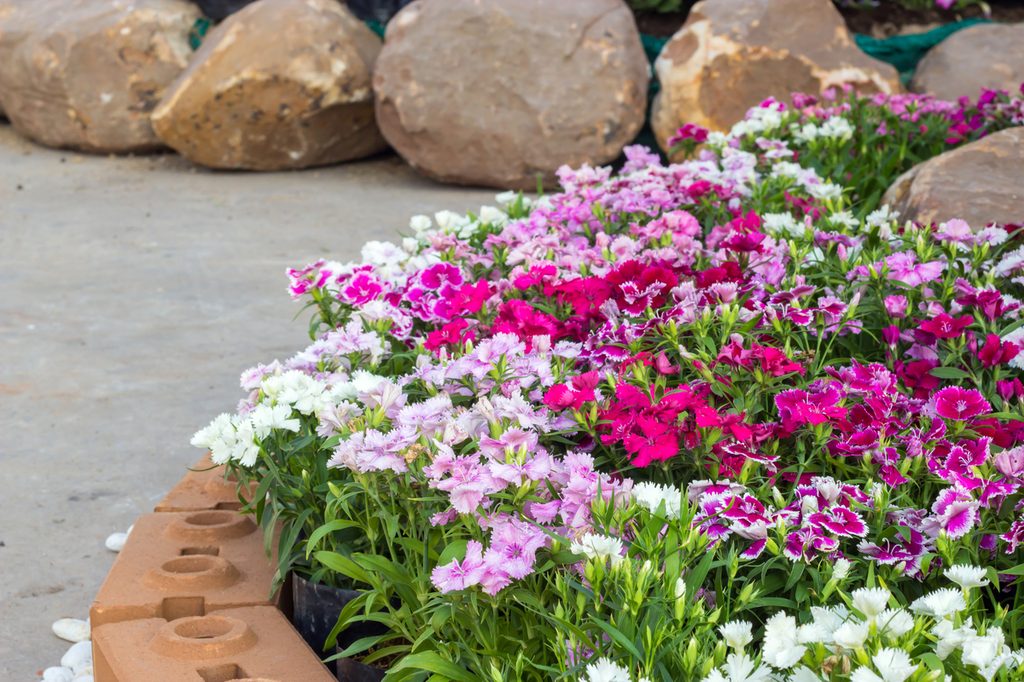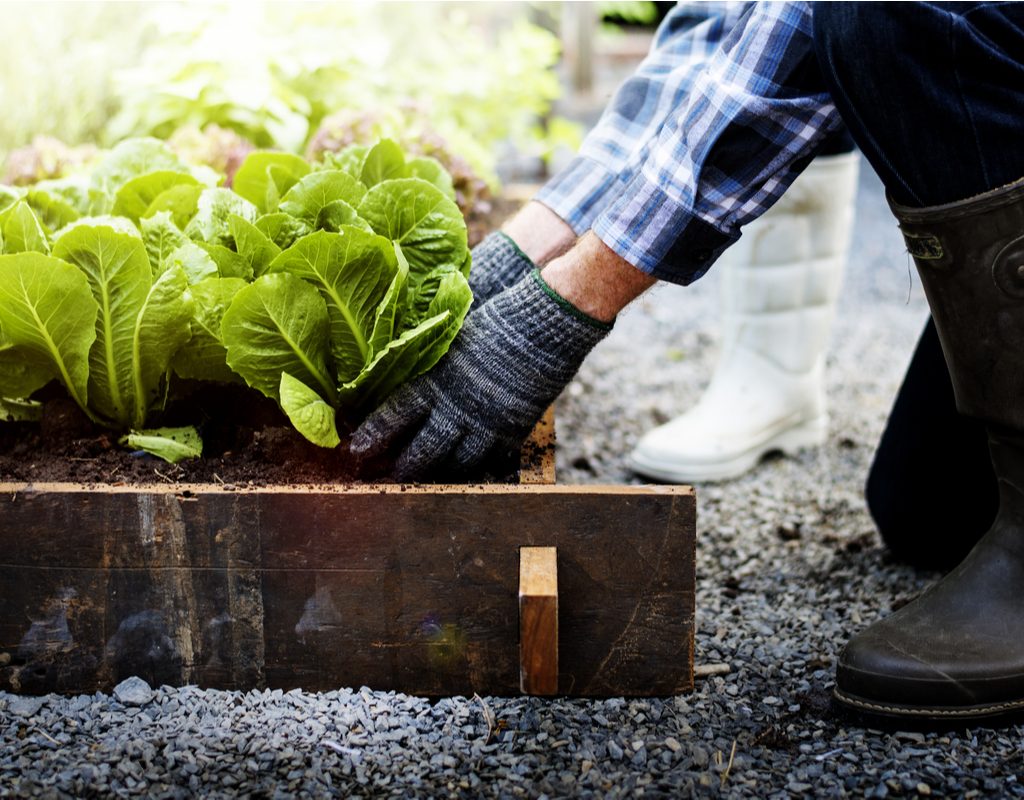
Your gardening season doesn’t have to be over when the leaves and temperatures start to fall. October is a great time for planting. The mild days and cool evenings are perfect for establishing cool-season flowers and veggies. Plus, trees and shrubs need less care and attention if you plant them in fall instead of spring. Although there are some heat-loving plants that prefer to start out with a long summer, the plants on this list find their sweet spot in autumn. Keep reading to find out what to plant in October.

Cool-season flowers
Purchase cool-season flowers from your local garden center in time for October planting. Or, start them from seeds in August or September. Apply a 2- to 3-inch layer of compost to amend garden beds prior to planting. For container garden setups, use a high-quality outdoor potting mix.
Pansies and violas
Pansies and violas are mound-shaped plants with emerald green foliage and colorful 1- to 2-inch flowers. They love the cold. Plant them in the fall for a colorful display as long as daytime temperatures stay above freezing. In the deep cold, they pause and resume as soon as the weather turns mild. Expect pansies and violas to remain in good condition until warm weather arrives in late spring or early summer.
- Transplant store-bought seedlings from cell packs or 4-inch grower pots. Space them 8 inches apart in flower beds. Apply a time-release fertilizer pellet that’s suitable for cold weather use (often labeled “pansy food”), and supplement monthly with water-soluble flower food. Water well-established pansies and violas only if the soil is dry.
Dianthus
Annual dianthus have a low-spreading growth habit with dark green leaves and clusters of circular, flattened flowers in shades of white, pink, red, or scarlet. They grow and flower best when days are mild and nights are cool. They look especially vibrant through fall. In winter, they rest and then come back and flower again through spring.
- Transplant store-bought seedlings from cell packs or 4-inch grower pots. Space the plants 6 to 10 inches apart in flower beds.
Snapdragons
Snapdragons grow upright stems with spikes of flower clusters that may reach higher than 36 inches. Dwarf cultivars stay lower than 16 inches. The flowers come in a wide range of colors, including white, yellow, pink, red, orange, and more. The foliage is medium green. Fall-planted snapdragons produce one heavy bloom cycle that lasts for several weeks, followed by a rest period through the winter. Remove the spent flower spikes in late fall or early winter, and they’ll bloom again in spring.
- Transplant store-bought seedlings from cell packs or 4-inch grower pots. Plant dwarf snapdragons 6 to 8 inches apart, or 10 to 12 inches for standard varieties.
Mums
With some types growing up to 3 feet tall, mums are a classic autumn bloom available in a variety of colors, including orange, yellow, purple, and more. You’ll be able to find these charming beauties all over your grocery and big-box stores come October. To keep them blooming, make sure to deadhead wilted flowers. They actually do best when you set them in your garden in the spring, but you can keep fall mums thriving by the next growing season by overwintering them or adding mulch on top of your soil. Remember to water them thoroughly and work compost into their growing medium.
- Transplant store-bought flowers from 4-inch grower pots into 6-inch planters or keep them in the ground. Space the flowers about 18 to 24 inches apart in flower beds. Start with unopened buds to enjoy your mums for a longer period of time.

Cool-season veggies
Cool-season veggies are a great way to keep growing backyard produce after things cool down. Some fast-growing crops even offer a harvest before Thanksgiving, while others will grow through winter for an early spring treat.
Onions
Onions take several months to grow and are edible at any stage, so you can plan on using the thinnings as chives or scallions. Those that remain will produce a nice crop of pungent globes next spring or summer, depending on the variety and your location. Most onions are day-length sensitive. They’re categorized as either “short day” types that grow best in the south, or “long day” varieties for the north. A few day-length neutral varieties are available that grow well over a large area.
- Before directly sowing onion seeds, amend the bed with a 2-inch layer of compost. Work the soil to a medium-fine texture with no rocks or weeds. Sow the seeds thinly in inch-deep furrows spaced 12 inches apart. Water lightly every day to keep the soil from crusting until they sprout.
Garlic
Plant garlic in the winter for next summer’s harvest. Purchase seed garlic from an online source or seed catalog. Certified seed garlic is more likely to produce a healthy, vigorous crop than bulbs from the grocery store produce aisle.
- Store seed garlic in a cool, dry location until planting time. Plant a week or two after your first fall frost. Separate the garlic bulb into individual cloves. Plant the cloves 6 inches apart in inch-deep furrows. Multiple furrows should be spaced 12 inches apart. Fertilize with a balanced organic fertilizer at planting time, and again when growth begins in the spring.
The cabbage family
The cabbage family, also known as brassicas or cole crops, love cool weather. For the best results, start cabbage, kale, collard greens, broccoli, Brussels sprouts, cauliflower, and others of this group indoors a few weeks before planting them in the garden. Garden centers typically offer a nominal selection, but seed catalogs and online retailers have a much wider variety.
- Transplant seedlings from cell packs or 4-inch pots early in the month. These crops all benefit from an application of lime and garden fertilizer ahead of planting. Harvest depends on crop type and climate. Collards and kale can be harvested as individual leaves, starting within a month. Choose early maturing varieties of heading crops for a harvest sometime between Thanksgiving and New Year’s.
Leafy greens and root crops
Lettuce, spinach, Swiss chard, mustard, turnip greens, and other small leafy greens are among the fastest growers, with some types maturing in just over a month — that said, you can begin snipping baby leaves for salads much sooner. Root crops such as carrots, turnips, and beets grow well until the ground begins to freeze. Choose early maturing cultivars to hedge against an early onset of deep cold.
- Start seeds for the first planting indoors a couple of weeks before planting time, or wait until the garden is ready and sow them directly in place. Soak the larger seeds of spinach and Swiss chard overnight for faster germination. Space seeds according to package instructions. Lightly water every day until germination to keep the soil from crusting over.

Protect against the cold
Fall flowers and vegetables face their biggest threat in early cold weather. Young seedlings, even of otherwise hardy plants, can succumb to frost if they haven’t hardened off. Keep an eye on the weather and take action if cold temperatures are in the forecast. Water your garden before the cold arrives, because cold and dry is the worst combination for plants. Cover young plants with fabric to keep the frost off of tender foliage.
Now that you know about the variety of plants you can grow in October, go forth and start your autumn garden with confidence! As you can see here, even the cool months of autumn can be a prolific time of year for plants.


